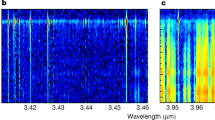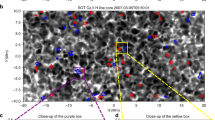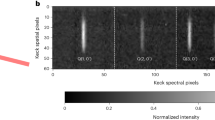Abstract
EARLY observations of the decametric radio emissions of Jupiter appeared to show that they had a narrow spectrum with a peak in the vicinity of 20 Mc./s. (refs. 1 and 2). As a result there were attempts to explain the radiation in terms of some appropriate single frequency mechanism such as plasma oscillations in a Jovian ionosphere2. More recently, however, with the passage of the solar activity maximum and consequent improving terrestrial observing conditions at low frequencies, the radiation has been detected at 10 Mc./s. (ref. 3). Here the results of observations at 4.8 Mc./s. will be reported.
This is a preview of subscription content, access via your institution
Access options
Subscribe to this journal
Receive 51 print issues and online access
$199.00 per year
only $3.90 per issue
Buy this article
- Purchase on Springer Link
- Instant access to full article PDF
Prices may be subject to local taxes which are calculated during checkout
Similar content being viewed by others
References
Gardner, F. F., and Shain, C. A., Austral. J. Phys., 11, 55 (1958).
Smith, A. G., and Carr, T. D., Astrophys. J., 130, 641 (1959).
Carr, T. D., Smith, A. G., Bolhagen, H., Six, N. F., and Chatterton, N. E., Astrophys. J., 134, 105 (1961).
Shain, C. A., Austral. J. Phys., 9, 61 (1956).
Author information
Authors and Affiliations
Rights and permissions
About this article
Cite this article
ELLIS, G. Radiation from Jupiter at 4.8 Mc./s.. Nature 194, 667–668 (1962). https://doi.org/10.1038/194667a0
Issue Date:
DOI: https://doi.org/10.1038/194667a0
This article is cited by
-
High-resolution Spectral Observations of Jupiter's Decametric Radio Emission
Nature (1964)
-
Decametric Radio Emissions of Jupiter
Nature (1963)
-
38-Mc/s Radiation from Jupiter
Nature (1963)
-
Stimulated Electron Spin-Flip Transition as the Source of 18-Megacycle Radiation on Jupiter
Nature (1962)
Comments
By submitting a comment you agree to abide by our Terms and Community Guidelines. If you find something abusive or that does not comply with our terms or guidelines please flag it as inappropriate.



